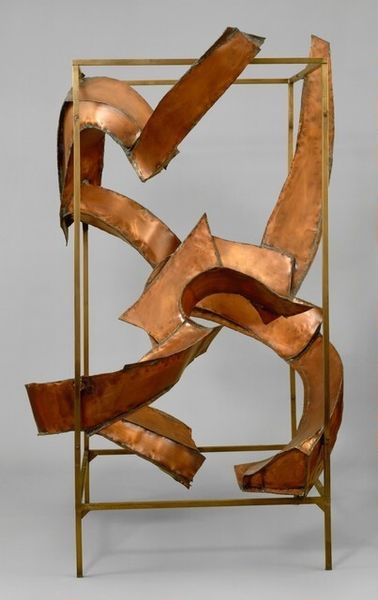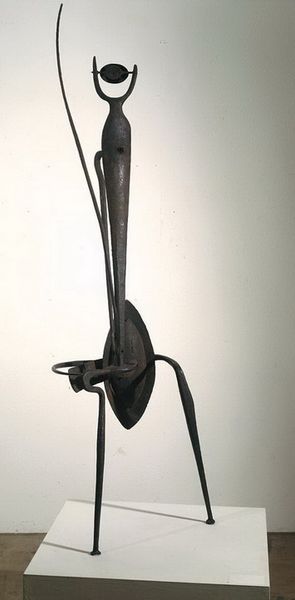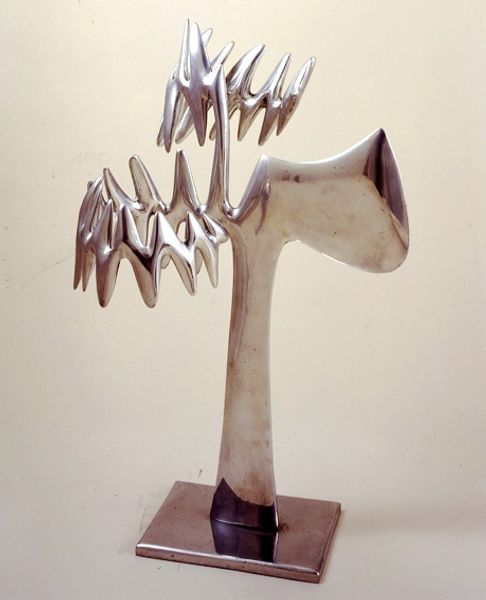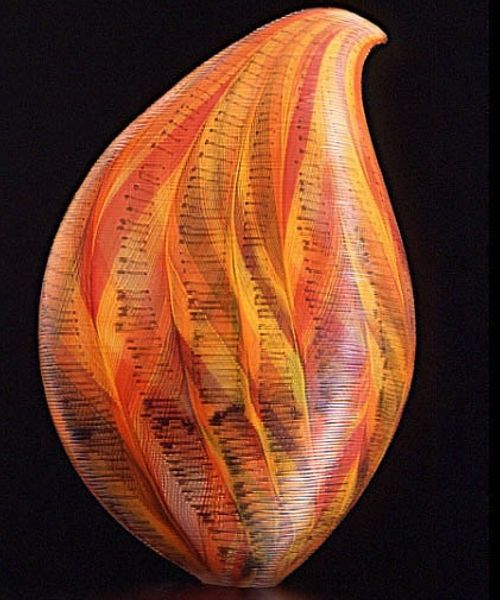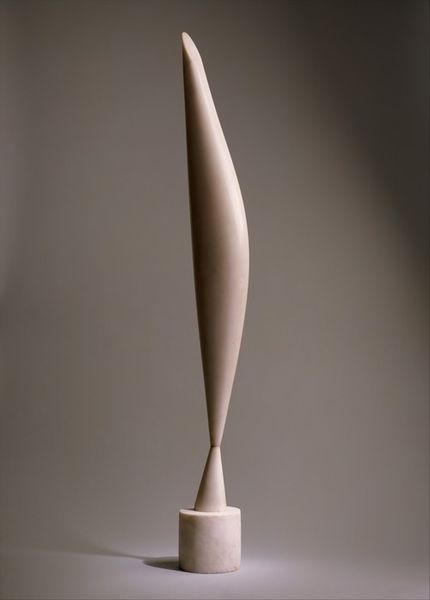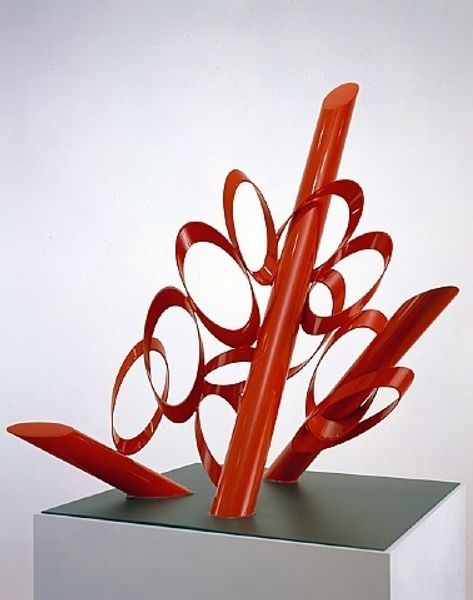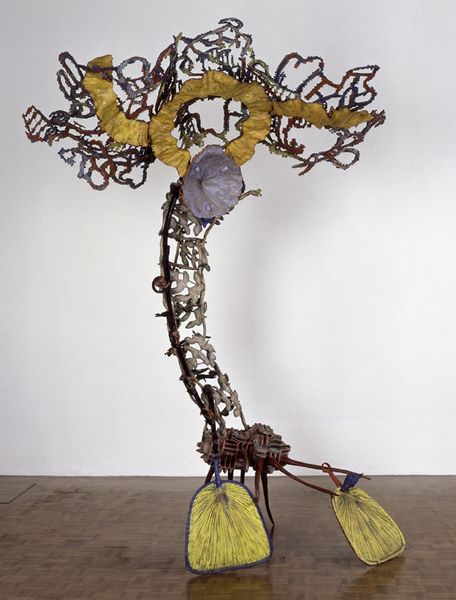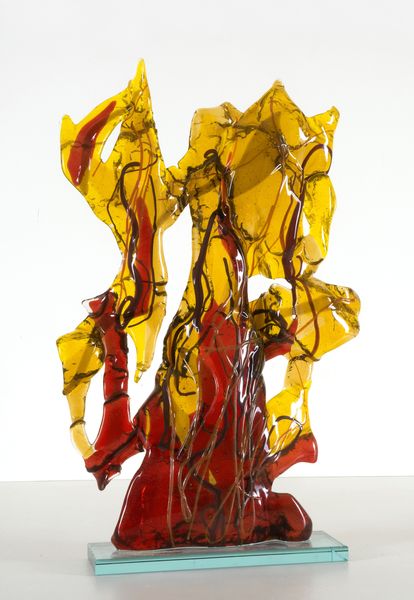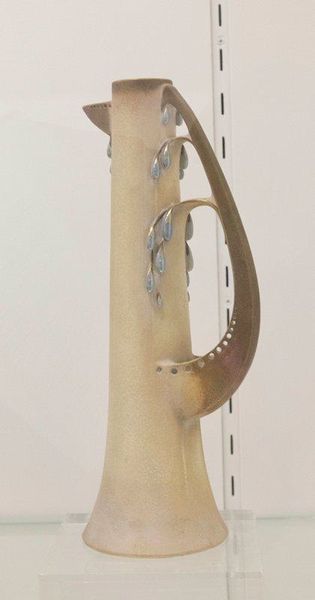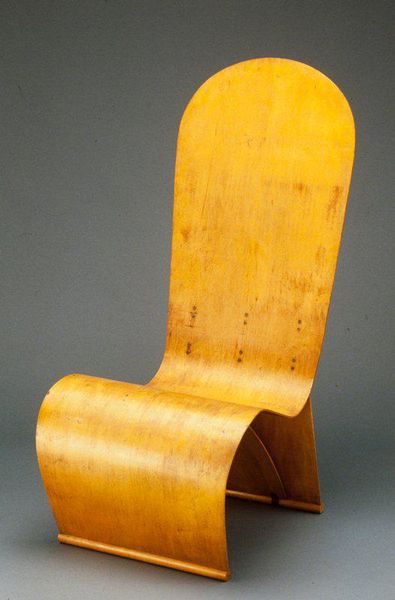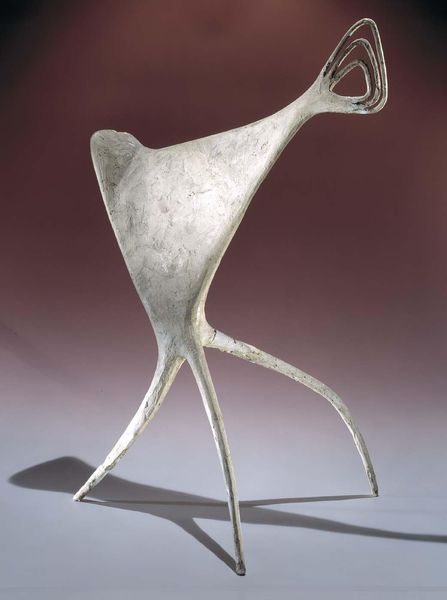
carving, metal, sculpture
carving
metal
sculpture
constructivism
geometric
sculpture
abstraction
modernism
Copyright: Edgar Negret,Fair Use
Curator: Standing before us is Edgar Negret’s "Corn," a 1996 sculpture constructed from painted metal. Editor: My first thought is boldness. The unapologetic yellow leaps out, and the symmetrical arrangement gives it a totemic, almost spiritual quality. Curator: Indeed. Negret's approach to sculpture involves manipulating industrial materials into organic forms, quite in line with Constructivist principles. I wonder, what does "Corn" say about the intersections between agriculture, industry, and Colombian identity at the end of the twentieth century? Editor: I think Negret is drawing connections between the mechanical precision of industrial production and the earth's abundance. Corn, especially in Latin America, has this loaded symbolic weight – from ancient indigenous traditions to contemporary political struggles around food sovereignty. How does this sculpture speak to that complicated history? Curator: His practice often challenged traditional notions of "fine art" by elevating industrial processes and materials. Negret isn't just celebrating industrial might, though. He seems also to examine how that power reshapes nature itself, or colonizes nature for resources. Editor: I agree, the repetitive, modular construction seems to highlight both standardization and the beauty one finds in simple production, a very important element in today’s art as well as other productions and disciplines. How does its presence shift if we consider Colombia's complex agricultural economy during Negret's lifetime? Were certain methods of production prioritized over others? Curator: Precisely. The formal arrangement invites reflection on issues of power, and class dynamics tied to material realities within specific cultural frameworks, doesn't it? Editor: Exactly. In this, the metal, rivets, the repeated form are transformed from base components to an artwork which carries a wealth of political implications. And its visual impact transforms a familiar item of food into a statement of sorts, especially around labor rights and resource distribution. Curator: Examining this through the lens of its creation allows us to question, rather than accept, assumptions and hopefully engage more people to examine the structures influencing labor forces. Editor: I concur. 'Corn', it seems, does much more than initially meets the eye – provoking insightful questions and critical inquiries related to culture and social justice in addition to it’s superb artistic craftsmanship.
Comments
No comments
Be the first to comment and join the conversation on the ultimate creative platform.

